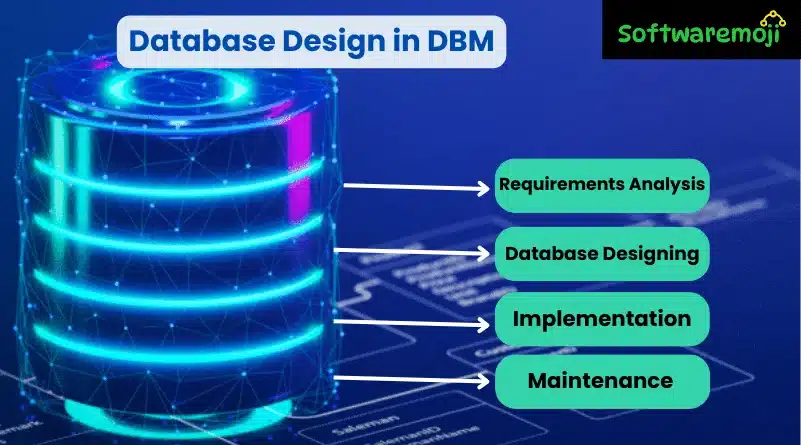
👉Tutorial-2: DBMS Normalization
👉Tutorial-3: ER Modeling in DBMS
📌What is Database Design?
Database Design in DBMS: Learn Data Modeling & Best Practices 2025Database design is the structured process of developing a database system to store, organize, and manage data efficiently. A well-designed database ensures data consistency, scalability, and optimized performance while reducing redundancy and improving storage efficiency.
Database Design in DBMS: Learn Data Modeling & Best Practices 2025The database design process involves two major models:
- Logical Database Design: Focuses on the structure and organization of data without considering physical storage.
- Physical Database Design: Maps the logical structure onto a physical storage system, optimizing it for performance and scalability.
📌Why is Database Design Important?
Database Design in DBMS: Learn Data Modeling & Best Practices 2025A well-planned database design is essential for:
✅ Improved Performance: Faster query execution and optimized data retrieval.
✅ Data Integrity & Consistency: Avoids duplication and ensures data accuracy.
✅ Easy Maintenance: Simplifies database updates and modifications.
✅ Cost Efficiency: Reduces storage requirements and hardware costs.
Database Design in DBMS: Learn Data Modeling & Best Practices 2025Pro Tip: The foundation of an efficient database lies in its design, not just SQL queries!
📌Database Development Lifecycle (DDLC)
Database Design in DBMS: Learn Data Modeling & Best Practices 2025 The Database Development Life Cycle (DDLC) follows several key steps to build a structured and efficient database system.
1️⃣ Requirements Analysis
- Planning: Define the scope, purpose, and goals of the database.
- System Definition: Identify the required data, user needs, and business logic.
2️⃣ Database Designing
- Logical Design: Develop a high-level structure of the database, focusing on entities, attributes, and relationships.
- Physical Design: Translate the logical model into an actual database schema, considering storage, indexing, and query optimization.
3️⃣ Implementation
- Data Conversion & Migration: Transfer data from legacy systems into the new database.
- Testing & Validation: Ensure the database meets performance and functional requirements.
4️⃣ Maintenance & Optimization
- Regular updates, indexing strategies, and security enhancements to maintain performance.
📌Types of Database Design Techniques
Database Design in DBMS: 1️⃣ Normalization in Database Design
Normalization is the process of organizing data into multiple tables to reduce redundancy and improve integrity.
🔹 Key Normal Forms (NF):
✔ 1NF (First Normal Form): Eliminates duplicate columns.
✔ 2NF (Second Normal Form): Removes partial dependencies.
✔ 3NF (Third Normal Form): Eliminates transitive dependencies.
Goal: Ensure each piece of data is stored only once, reducing anomalies.
Database Design in DBMS: 2️⃣ ER Modeling (Entity-Relationship Model)
The ER Model helps visually design database structures using Entities, Attributes, and Relationships.
Key ER Model Components:
- Entity: Represents an object (e.g., Student, Employee).
- Attribute: Defines properties of an entity (e.g., Name, Age).
- Relationship: Defines associations between entities (e.g., Student enrolls in Course).
ER Diagrams serve as blueprints for database design before implementation.
📌Conclusion
Database Design in DBMS: Learn Data Modeling & Best Practices 2025 Effective Database Design in DBMS is the foundation of a high-performance database system. Whether you’re working on relational databases (SQL) or NoSQL architectures, proper data modeling, normalization, and ER modeling will significantly impact performance and efficiency.
🔹 Key Takeaways:
✔ Database Design ensures efficiency, integrity, and scalability.
✔ Logical & Physical Design are the two core models.
✔ Normalization minimizes redundancy and improves consistency.
✔ ER Modeling helps structure relationships between data elements.
By mastering database design, you can create optimized, scalable, and future-proof database systems for any application!
Click To Apply
👉Tutorial-2: DBMS Normalization
👉Tutorial-3: ER Modeling in DBMS
